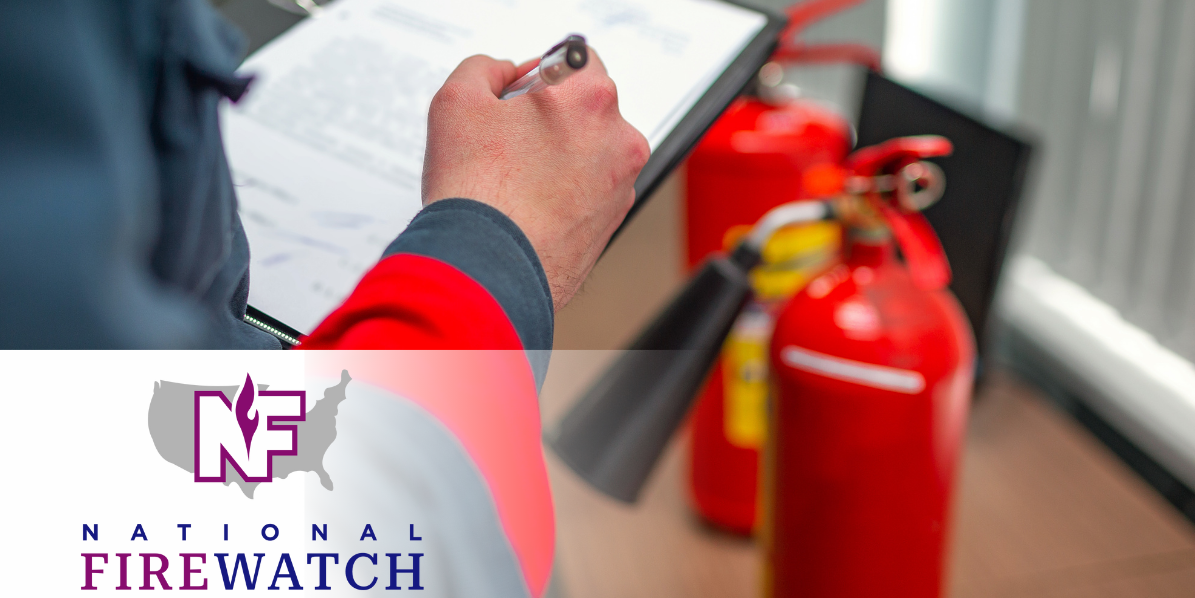Most fire watch deployments are requested to cover power outages, both planned and unexpected. Having guards on site during a lengthy outage compensates for inactive fire safety systems, allowing operations to continue safely. In this context, guards patrol affected areas and log their observations while maintaining a minimal presence. Much like security guards, the challenge of conducting fire watch during an outage is to stay adaptable and attentive. Fire watch guards have another function, however, that requires more focus and job-site-specific experience.
In hectic environments like construction sites and busy event spaces where safety is paramount, fire watch guards are deployed to oversee �Hot Work�. This term is defined by the Occupational Safety and Health Administration (OSHA), which provides clear guidelines to prevent fire hazards during hot work operations.
Job sites that involve operations such as welding, cutting, or brazing in settings without built-in industrial safety systems must comply with OSHA�s hot work regulations. If you�re a decision-maker for a construction team, event venue, or property management company, you can benefit from this short list of tips we�ve put together. Here’s what you need to know:
1. Understanding Fire Watch
A fire watch involves assigning trained personnel to monitor hot work areas for potential fires. Their primary role is to detect and respond to fires during and after hot work operations. Importantly, the individual performing the hot work cannot serve as the fire watch, as their focus is on the task at hand.
2. OSHA’s Fire Watch Requirements
OSHA mandates that employers develop a written fire watch policy detailing:
- Training requirements for fire watch personnel
- Specific duties to be performed
- Equipment to be used
- Personal protective equipment (PPE) to be provided
This policy ensures that fire watch personnel are adequately prepared to handle potential fire hazards.
3. When Is a Fire Watch Required?
A fire watch is necessary during hot work if any of the following conditions are present:
- Sparks or slag might pass through openings and cause a fire
- Combustible materials are within 35 feet of the hot work area and cannot be removed or shielded
- Hot work is conducted near combustible materials that could ignite via conduction or radiation
- A competent person deems a fire watch necessary
4. Duties of Fire Watch Personnel
Fire watch personnel are responsible for:
- Maintaining a clear view of the hot work area
- Having immediate access to firefighting equipment
- Being trained to detect and respond to fires
- Remaining in the area for at least 30 minutes after hot work concludes
- Being authorized to stop work if unsafe conditions arise
5. Training Requirements
OSHA requires that fire watch personnel receive training covering:
- Basics of fire behavior and extinguishing methods
- Use of firefighting equipment
- Recognition of adverse health effects from fire exposure
- Use of PPE
- Communication and alarm procedures
Training must be conducted before assignment, annually, and whenever operations change.
6. Fire Prevention Measures
Employers must implement fire prevention measures, including:
- Removing or protecting combustible materials near hot work
- Providing suitable fire extinguishing equipment
- Ensuring fire watch personnel are present during and after hot work
These steps are vital to minimize fire risks on construction sites.
7. Post-Hot Work Monitoring
After hot work concludes, fire watch personnel must continue monitoring the area for at least 30 minutes to ensure no smoldering fires exist. This period may be extended based on the employer’s assessment of fire hazards.
8. Employer Responsibilities
Employers are responsible for:
- Developing and implementing a fire safety plan
- Providing training and equipment to fire watch personnel
- Ensuring fire watch duties are clearly defined and followed
- Maintaining records of training and fire watch assignments
These responsibilities are outlined in OSHA’s standards to ensure workplace safety.
9. Compliance With OSHA Standards
Compliance with OSHA’s fire watch regulations is not only a legal requirement but also a critical component of workplace safety. Non-compliance can lead to penalties and increased risk of fire incidents. Employers should regularly review OSHA standards to stay updated on requirements.
10. Connect With a Reliable Fire Watch Partner
In our experience, fire watch is most often needed in a hurry. When vendors are sourced on short notice, project managers may have to deal with high prices, project delays, or inexperienced guards. We always advise folks in our network to connect with a fire watch partner that can reliably service your job site well in advance of when they�ll be needed. This ensures projects remain safe and on schedule.
National Firewatch was founded to address this exact problem. We are building a nationwide network of guards who arrive within hours in most major cities. Our reach is expanding every month, thanks to our combination of veteran guards and 24-hour administrative support. If you need fire watch guards on site today, contact us right away.


